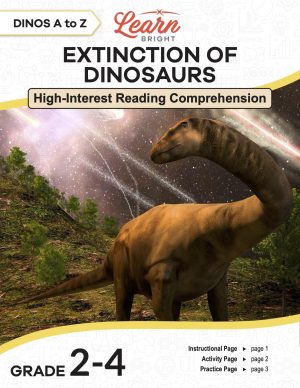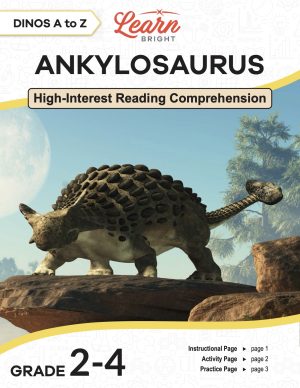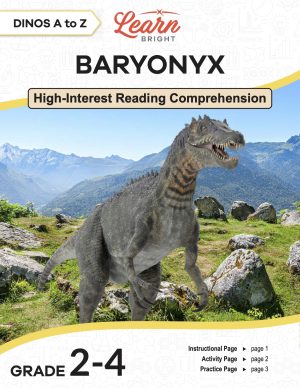Description
What our Describing Using Adjectives/Adverbs lesson plan includes
Lesson Objectives and Overview: Describing Using Adjectives/Adverbs teaches students strategies for describing people, places, and things. At the end of the lesson, students will be able to use the words and phrases they learn while reading, being read to, and through conversations to help them describe people, places, and things. This lesson is for students in 2nd grade.
Classroom Procedure
Every lesson plan provides you with a classroom procedure page that outlines a step-by-step guide to follow. You do not have to follow the guide exactly. The guide helps you organize the lesson and details when to hand out worksheets. It also lists information in the green box that you might find useful. You will find the lesson objectives, state standards, and number of class sessions the lesson should take to complete in this area. In addition, it describes the supplies you will need as well as what and how you need to prepare beforehand.
Options for Lesson
Included with this lesson is an “Options for Lesson” section that lists a number of suggestions for activities to add to the lesson or substitutions for the ones already in the lesson. Some of the suggestions relate to the lesson activity. For the activity, you can read aloud a sentence, ask your students to identify an adjective/adverb, and then they use the same word in a new sentence; you can also read aloud a sentence and tell your students they must use a part of the sentence in a new sentence. One optional addition to the lesson is to assign students words that they can change from an adjective to adverb and have them use both words in the same sentence. Finally, you can have your students choose words and phrases from current reading or other subject content to use in new sentences that they write or say aloud to the class.
Teacher Notes
The teacher notes page includes a paragraph with additional guidelines and things to think about as you begin to plan your lesson. This page also includes lines that you can use to add your own notes as you’re preparing for this lesson.
DESCRIBING USING ADJECTIVES/ADVERBS LESSON PLAN CONTENT PAGES
Adjectives, Adverbs, and More
The Describing Using Adjectives/Adverbs lesson plan includes four content pages. As you go about your day, you hear people speak and read books, stories, and other text. You’re seeing and hearing many different words and phrases, some of which are familiar and some of which are not. If you see or hear a word or phrase for the first time and you listen or read carefully, you can learn how to use them in your own speaking and writing!
It’s common for people to learn words and phrases while reading or listening. When you hear a new word or phrase, try to use it in your own conversations or writings to help you remember them.
The lesson includes a passage from the fable The Boy Who Cried Wolf. In this passage, they use the word prank. You might not have already known what it means, but you can try using it in a sentence to help you remember it. The passage also uses the phrase more loudly than ever. How could you use that phrase in your own writing? The lesson includes a few examples. In each sentence, they use the phrase in a slightly different way.
One example sentence uses both loud and loudly: The sound of the loud siren screamed more loudly than ever before from the police car. In this example, the word loud describes the siren, while the word loudly describes how the siren screamed.
Loud is an adjective (a word that describes nouns such as persons, places, and things), while loudly is an adverb (a word that describes a verb or action word).
Using Adjectives and Adverbs
Adjectives and adverbs both describe things. We use them to make our writing and speaking more interesting, and to add details to stories.
Adjectives
Adjectives are words that describe nouns. They give more information about a person, place, or thing. The lesson provides two example sentences that show how different a sentence can be when you add adjectives: The tiger was seen walking through the jungle. The large, striped tiger was seen walking through the tree-filled, empty jungle.
The second sentence is much more descriptive, and includes details about both the tiger and the jungle. Large, striped, tree-filled, and empty are all adjectives. Including them allows you to better picture the tiger in the jungle. Try thinking of some other adjectives that you could use to describe a tiger and a jungle!
Adverbs
Adverbs are words that describe verbs and give more information about an action. They tell how, when, or where something happened. We can use a similar example as the one above to show the difference between using and not using adverbs in your writing: The tiger was seen walking through the jungle. The large, striped tiger was seen slowly walking through the tree-filled, empty jungle.
The second sentence tells you how the tiger walked, because the word slowly is an adverb. The word through is also an adverb and tells you where the tiger walked. We can add even more adverbs to this sentence: Yesterday, the large, striped tiger was seen slowly walking through the tree-filled, empty jungle. The word yesterday is an adverb that tells you when the tiger walked.
Try thinking of some other adverbs that you could use to describe how, when, or where the tiger walked! They should tell the reader about that specific action.
Try to use the adverbs and adjectives that you see and hear in your own reading and writing!
DESCRIBING USING ADJECTIVES/ADVERBS LESSON PLAN WORKSHEETS
The Describing Using Adjectives/Adverbs lesson plan includes three worksheets: an activity worksheet, a practice worksheet, and a homework assignment. You can refer to the guide on the classroom procedure page to determine when to hand out each worksheet.
CIRCLE ACTIVITY WORKSHEET
Students will participate in a Circle Activity with the whole class. Following that activity, they will complete the activity worksheet. For the worksheet, they will list five words from the activity on the worksheet and will write new sentences using each word. Finally, they will tell whether each word is an adjective, adverb, or neither.
Students can also work either alone or in groups to complete the activity.
ADJECTIVE OR ADVERB PRACTICE WORKSHEET
The practice worksheet asks students to first read sentences and tell whether each underlined word is an adjective or adverb. They will then correctly rewrite sentences using the underlined words from the first part of the worksheet.
DESCRIBING USING ADJECTIVES/ADVERBS HOMEWORK ASSIGNMENT
For the homework assignment, students will listen to a person speaking at home, on TV, or the Internet and will list ten phrases used. They will then use these phrases in new sentences.
Worksheet Answer Keys
This lesson plan includes answer keys for the practice worksheet and the homework assignment. If you choose to administer the lesson pages to your students via PDF, you will need to save a new file that omits these pages. Otherwise, you can simply print out the applicable pages and keep these as reference for yourself when grading assignments.










